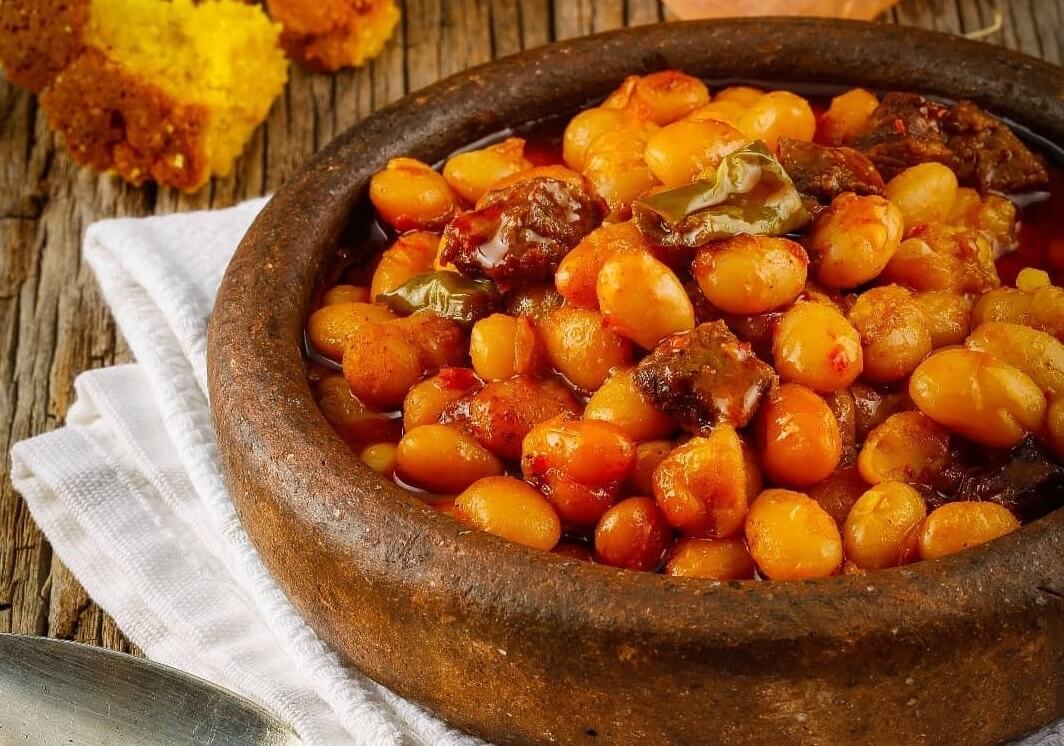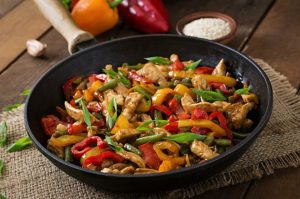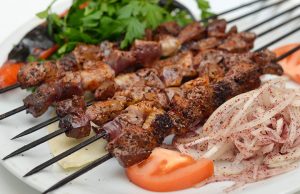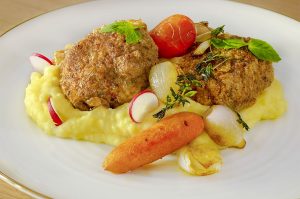Kuru Fasulye, or in English Turkish White Beans Stew, is probably the most famous juicy dish of Ottoman cuisine. It is a juicy meat dish that has plenty of white beans, chopped tomatoes, and sliced long green peppers in it.
If you are a vegetarian and following my blog; after you read the first paragraph you will say that yet another Turkish dish with meat. But no worries. This juicy dish is a very versatile dish that you can cook without any meat in it too. Actually, most of us like this delicious juicy dish without meat in it.
In our cuisine, there are at least 5-6 different variations of the Turkish white beans stew dish. You can either make it plain (without any meat) or you can make it with lamb meat, chicken breast meat, Turkish pastırma, or Turkish sausage.
The History
White Beans came to Ottoman cuisine at the beginning of the 18th century from Central America. Turkish historians say The Ottoman Empire met with pulses and beans very late considering Europe. After the white bean and its varieties came from Central America to Ottoman borders, it spread very rapidly and became one of the most wanted food varieties among the Ottoman Empire citizens.
During the Ottoman Empire period, there was a concept of neighborhood bakeries. These bakeries were responsible to make bread and distribute it to the Empire’s citizens. These bakeries are also used for cooking some special foods for the locals besides making bread. Because during that time it was not easy to reach special cooking pots such as terracotta (clay) pots and special cooking stone pits or stone ovens. Turkish White Beans Stew (Kuru Fasülye) was one of the dishes that need to be cooked in terracotta (clay) pots.
Today, it is very easy to reach any type of cooking pot. You can make this dish with a saucepan without any problem. But in 300 years ago, Ottoman Empire citizens were using neighborhood bakeries to cook their juicy dishes at a small cost.
Where to find?
In Turkey, we have a type of restaurant called Esnaf Lokantası, in English Tradesman Restaurant, which cooks various different types of juicy dishes. The below photo was taken at one of these Tradesman Restaurants in Ankara city of Turkey. These restaurants are usually found in the cities where the little commercial stores, brick-and-mortar stores, and offices are located at. It is because we Turks like to eat juicy dishes a lot. And Kuru Fasulye (White Bean Stew) is the pillar (main) dish of these restaurants.
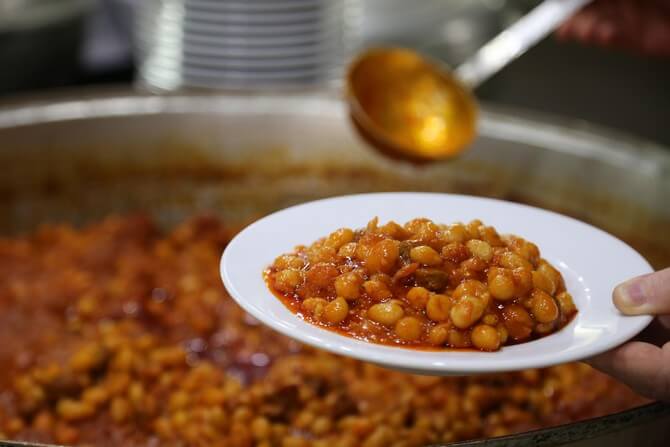
When you go to any Tradesman Restaurant in any city in Turkey, you can always see the Kuru Fasulye dish on their menu. In Turkey, Kuru Fasulye is mostly consumed with pilaf, cacık, and pickles together. When you give a Kuru Fasülye dish order to the waiter, he/she asks; do you want pilaf, cacık, and pickles aside. It is the best combo for the Kuru Fasulye dish.
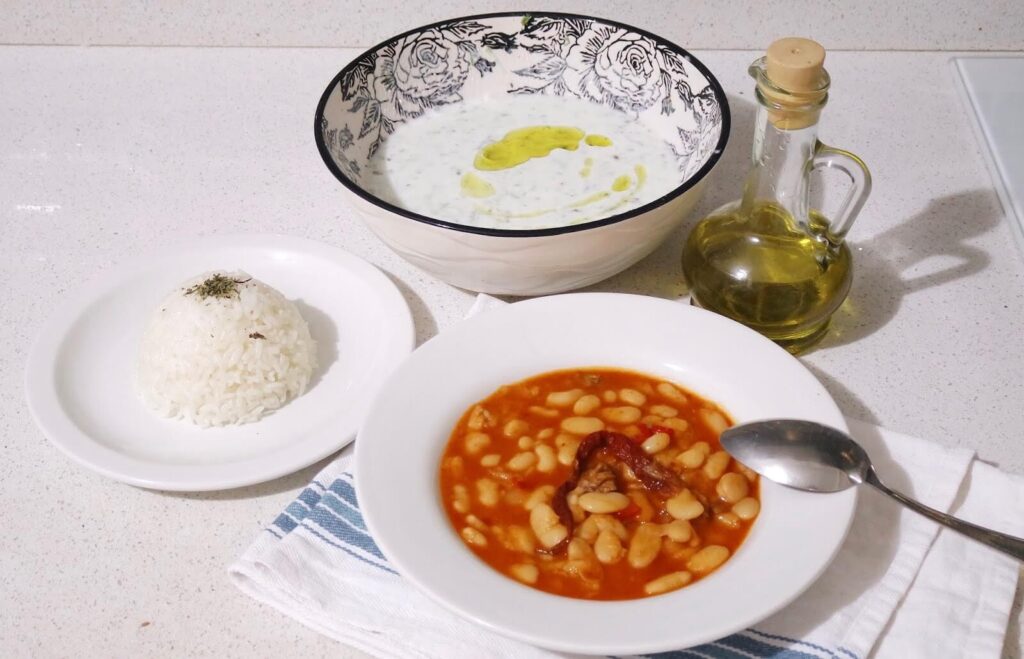
So; the next time you come to Turkey, just forget about Kebabs for a while and try this magnificent juicy dish. Trust me you will not regret it. Try it with pilaf, cacık, and pickles aside. It is how we eat this juicy dish in Turkey.
Where to eat?
If you are visiting İstanbul, you can give it a try at Bizce Ortaköy Kuru Fasülyecisi restaurant. The restaurant’s main course is Kuru Fasulye dish as you can understand from their brand name. The restaurant is using organic white beans that are grown in Erzurum city of Turkey. It is a small restaurant but the taste of their Kuru Fasulye dish is great.
If you are in a different city rather than İstanbul, just ask any local shop where is the nearest Esnaf Lokantası (Tradesman Restaurant). The locals always know better than anyone else about where the best Tradesman Restaurant is located nearby.
Below, I gave you the Kuru Fasulye dish recipe which is cooked with a terracotta (clay) cooking pot. It is my preference to stick to the core cooking method of Turkish cuisine dishes. But if you like to cook it in a saucepan, it is also okay too. But the one which is cooked in the terracotta (clay) pot is much tastier.
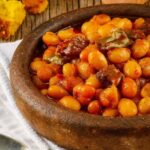
Kuru Fasulye
Ingredients
- 2 cups white beans
- 250 gr diced lamb (boneless)
- 1 onion diced
- 2 garlic cloves peeled and sliced
- 2 long green peppers sliced
- 2 tomatoes peeled and chopped
- 6 cups hot water
- 4 tbsp butter
- 1 tbsp tomatoe paste
- 1 tbsp pepper paste
- 1 teaspoon salt
- 1/2 teaspoon ground black pepper
Instructions
-
Soak the white beans overnight (12 hours)
-
Put terracotta (clay) cooking pot into the oven and pre-heat the oven to 170C (340F)
-
Rinse the beans well and put the rinsed white beans into a saucepan and add enough water to cover the top of the beans and boil for about 35 minutes until they are just starting to become tender. Drain and put it aside.
-
Put the butter, diced onions, sliced garlic cloves, long green peppers into a saucepan and cook until onions have a golden color. And then add the lamb cubes and saute until lamb cubes have brown color (about 5-8 minutes).
-
Add the peeled and chopped tomatoes, tomato paste, pepper paste, black pepper, salt and stir them well for about 5 minutes. Add the rinsed white beans and stir them all well. Make sure they all mix well and then close the heat and set the saucepan aside.
-
Take out the heated terracotta (clay) cooking pot from the oven and put the white beans with lamb mix inside the terracotta (clay) cooking pot and then add 6 cups of hot water into the clay pot and stir and then close the terracotta (clay) pot lid. Put the clay pot back in the oven and close the oven door. Cook 1 hour.
-
Serve.
